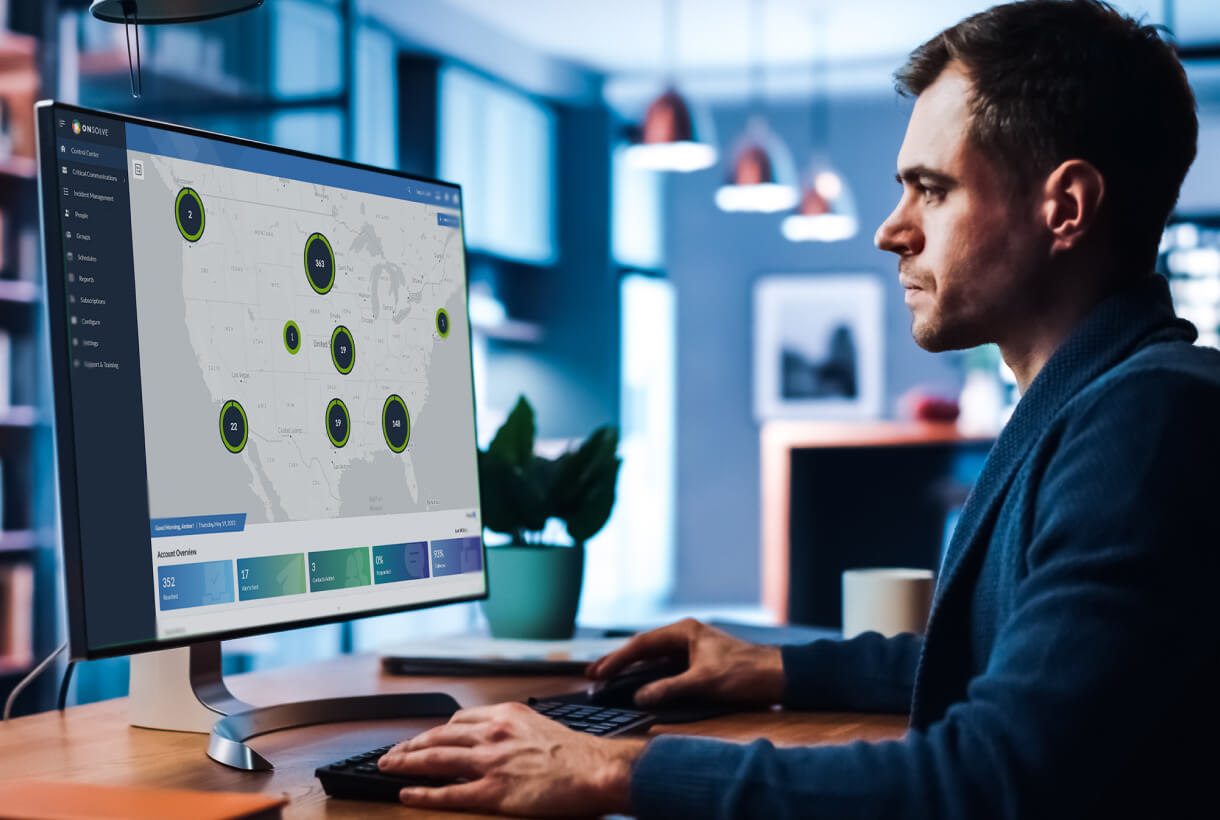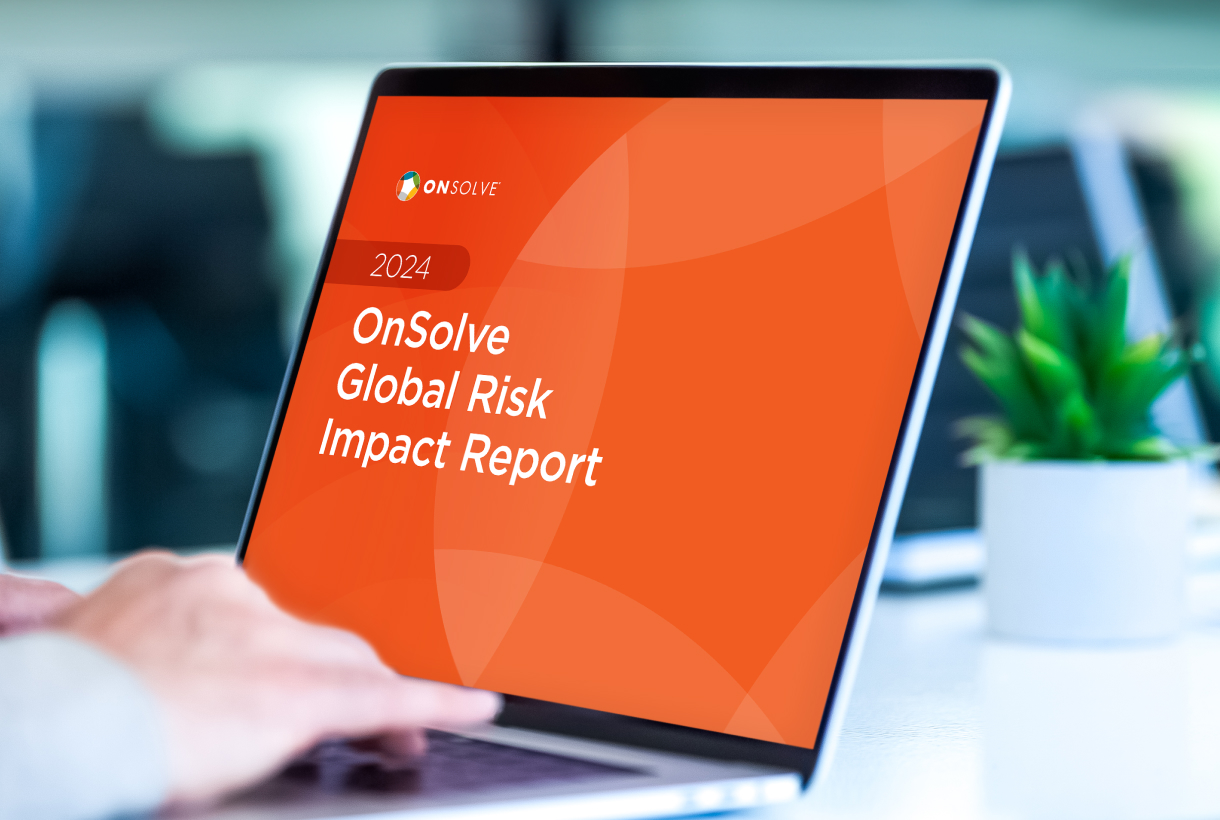If there was an active shooter in one of your organization’s buildings, how would you alert your staff to keep them safe? Prior to the advent of modern mass notification systems, organizations faced with a crisis often resorted to phone trees or email as a way to spread the word about an emergency. But when lives are in danger, alerts need to be delivered in a matter of minutes, not hours.
KnowBe4, the provider of the world’s largest security awareness training and simulated phishing platform, uses OnSolve Mass Notification to communicate with employees about severe weather and other unpredictable crises. The Director of Physical Security can quickly send an alert to a specific group of employees who can then take action to stay safe. Employees can also reply to the alert and mark themselves as “safe” or request assistance. Keeping lines of communication with employees open during hurricane season is important for KnowBe4, but the Mass Notification System also came in handy when a freon leak necessitated an evacuation of three floors of an office building.
Here are five other ways that a mass notification system can protect and inform your employees.
1. Rapidly Sends Critical Alerts to All Stakeholders
In emergency situations when there is little to no advance notice—such as an active shooter, cyberattack, tornado or flash flood—every minute counts™. The sooner you can get information to employees, the more likely they are to seek shelter or avoid danger before it’s too late.
The KnowBe4 security team keeps a library of pre-prepared alerts for the most common communications – i.e., the building is closed today due to hazardous road conditions, a power outage has affected the office, etc. This saves time during a crisis. Messages can be sent on a variety of communication channels, including email, phone, SMS, push notifications, desktop alerts and more, ensuring that stakeholders receive the alert regardless of whether or not they’re at their desk.
2. Allows for Two-Way Communication
One-way communication is great for alerting staff of an imminent threat, but what if an employee needs to request assistance or has further questions? Two-way communication allows recipients to mark themselves as safe or ask for help.
Most modern mass notification products also enable organizations to see who has received the message, whether they have opened it and how they have responded. When you see that someone has not received or responded to a message, you can work with your HR team to find out whether they need assistance or simply didn’t bother to reply to the message. Once a crisis has passed, you can analyze the responses and reports to help improve your emergency response plan going forward.
How It Works: OnSolve Mass Notification
Discover exactly how our mass notification capabilities help organizations keep their people safe and informed. Learn about key features, answers to the most common communications questions and see how fast and easy it is to send an alert.
3. Enables Geo-Targeted Messaging
Global organizations need an alert system that allows them to send targeted messages to specific groups of employees. Staff members based in California don’t need to receive alerts about a hurricane hitting the East Coast, and messages that might be relevant to those working out of the corporate headquarters don’t need to be sent to other locations around the world.
Geo-targeted messaging enables security teams to pinpoint staff in specific regions, even down to a precise office building or floor, who are going to be impacted by an emergency. When team members regularly travel around the world, it can seem nearly impossible to keep track of everyone’s location at all times. But with geo-location, anyone in an affected area will receive the alert and be able to take appropriate action.
4. Maintains Reliable Communication Channels Before and During Crises
Not all emergencies are last-minute. It pays to be proactive when it comes to bracing for things like hurricanes, wildfires or pandemics. A mass notification system can enable your organization to inform employees of impending threats and either advise them to evacuate the area or notify them the office is closed and they should work from home or an alternative workspace.
Sending clear, concise and accurate messages before and during a crisis will establish trust with employees and help ensure they will not seek out possibly inaccurate information elsewhere. Your lines of communication need to be able to withstand any crisis, and if one channel goes down, you should have several backups, such as an emergency hotline or online information board that staff can refer to for the latest updates. If you’re working with a reliable technology partner, they should be able to support your organization during any crisis.
5. Keeps Stakeholder Contact Information Up to Date
If you don’t have accurate and up-to-date contact information for all of your employees, your mass notification system will be useless during a crisis. A modern system enables organizations to sync HR databases with emergency communication software, ensuring all contact information is as accurate as possible. And because people often move or change their phone number or email address, ideally, your system will allow staff to securely log in and update their information at any time.
Every organization should test their alert system prior to a real-life emergency to make sure everyone is receiving the alerts. Make sure employees understand the importance of updating their contact information and responding to messages. Every minute the security team spends checking on someone who didn’t bother to respond to a message is a minute they could have spent helping someone who was impacted by a disaster.
Having a mass notification system in place for unexpected events not only protects your employees from potentially dangerous scenarios, but it can also give your staff peace of mind that they’ll be properly notified with directions on what to do in an emergency.



